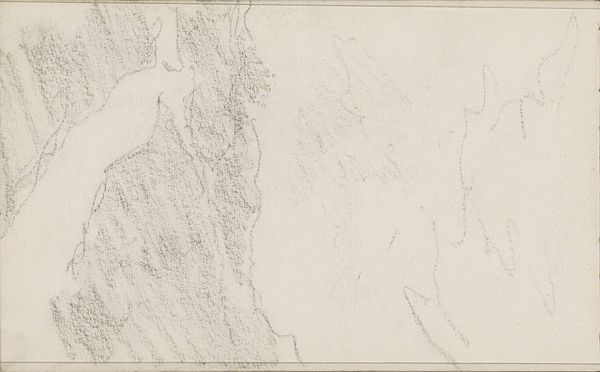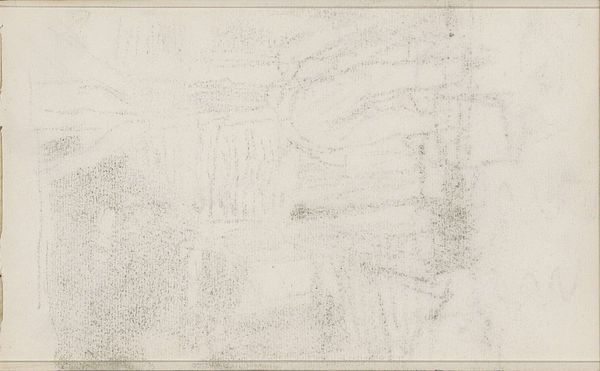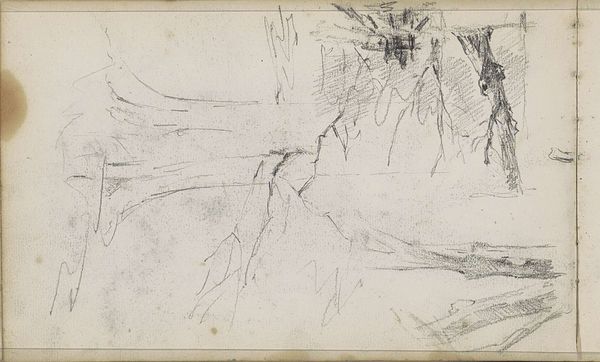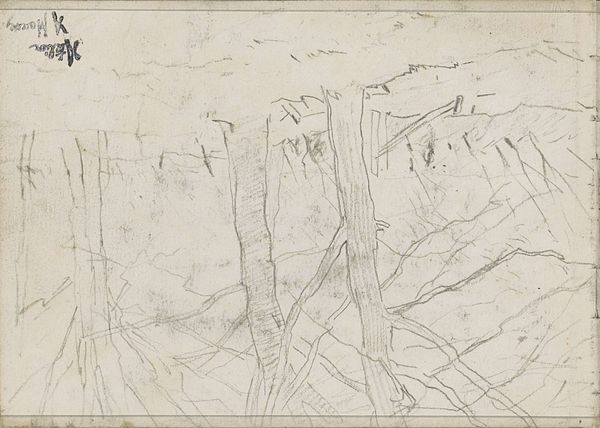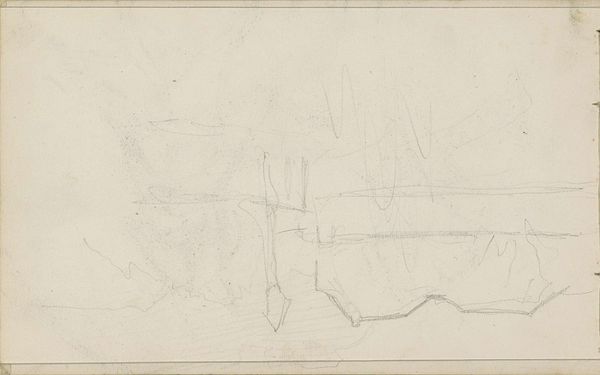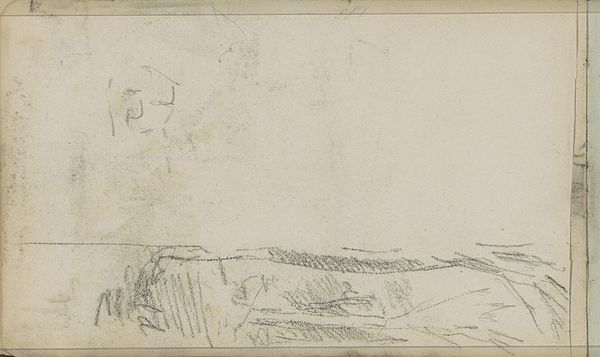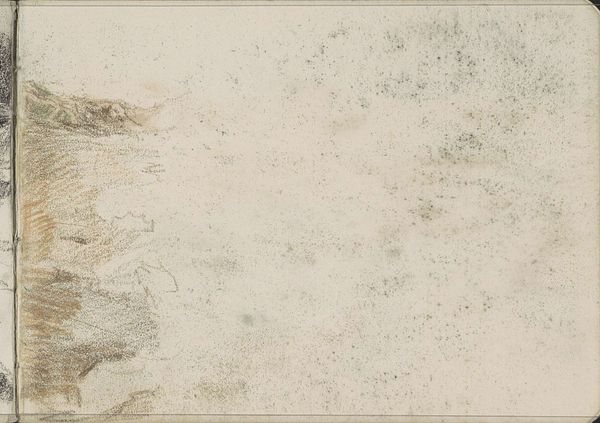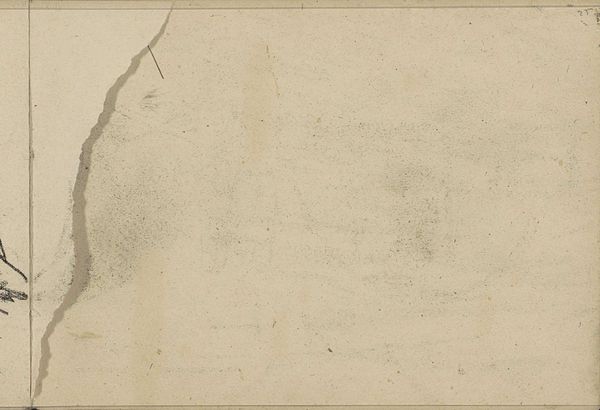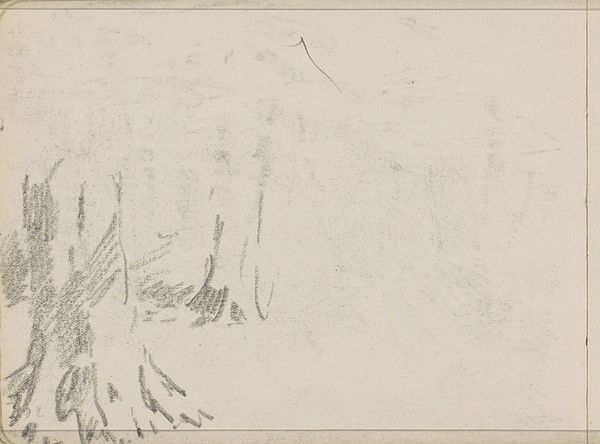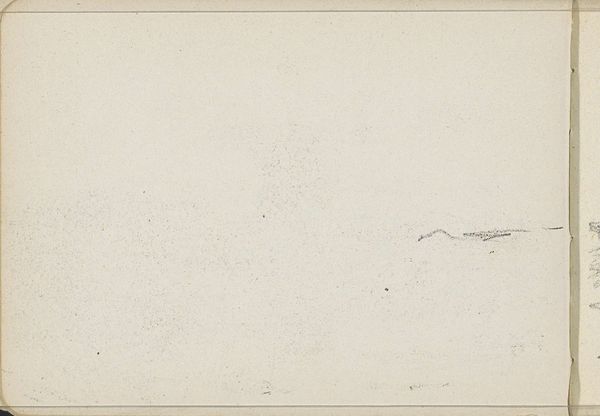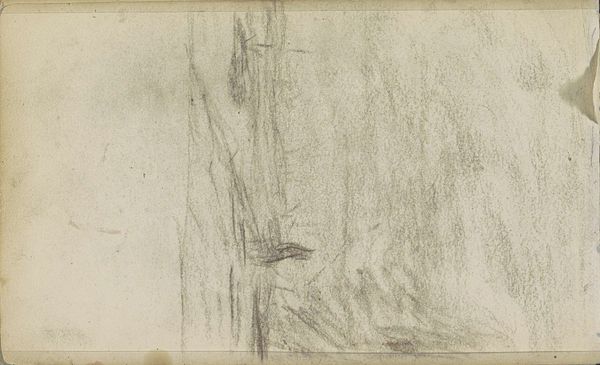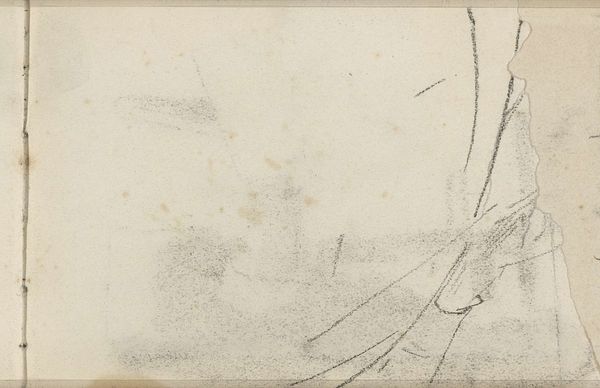
drawing, pencil
#
drawing
#
impressionism
#
pencil sketch
#
landscape
#
etching
#
pencil
#
realism
Copyright: Rijks Museum: Open Domain
Editor: This is Anton Mauve's "Man uitkijkend over een vaart," a pencil drawing that was created sometime between 1848 and 1888. It feels incredibly sparse, almost unfinished. What strikes me most is the isolation of the figure. What do you see in this piece? Curator: That sense of isolation is key. Mauve, working within a rapidly industrializing Netherlands, captures a tension between the individual and the changing landscape. This drawing speaks to the socio-political climate of the late 19th century, where urbanization and modernization threatened traditional ways of life. The "vaart," or canal, isn't just a body of water; it's a symbol of commerce and industry encroaching on the natural world. Where does the man fit within this context? Is he part of it, or separate? Editor: He certainly looks separate, almost melancholic. Is that a common theme in art from this period? Curator: Absolutely. Think of the rise of Realism and Impressionism – artists were increasingly focused on depicting everyday life, including the anxieties and alienation brought about by social and economic upheaval. Mauve's sketch becomes a meditation on labor, class, and the individual's relationship to progress. Consider also how this image resonates with our contemporary moment, our relationship with technology, and the constant mediation between nature and industry. Does the scene echo present concerns about technology's dominance, climate change or urban expansion? Editor: I never thought about it that way. The loneliness really highlights the broader feeling of disconnect that's only become more amplified today. It's powerful how a simple sketch can be so relevant across time. Curator: Precisely. By examining the historical and social context, we can appreciate how Mauve's work speaks to the enduring human experience of displacement and change.
Comments
No comments
Be the first to comment and join the conversation on the ultimate creative platform.
